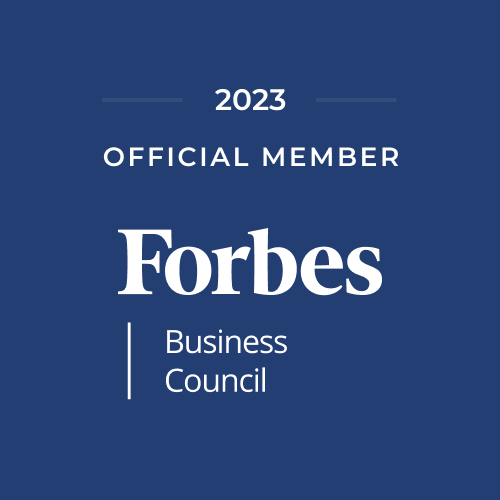Bookmarks: 5 Interesting Articles That May Help You This Week
/Each week, I select a few articles that rise above the fray and hopefully help you on your journey in the CRE world. They pull from one of four "corners:" corporate real estate, technology, management science and anything positive. I welcome your comments on these articles.
1. Duke Long’s Updated 2019 Top 150 Commercial Real Estate People You Must Connect With On LinkedIn and Duke Long’s Updated: 2019 Top 100 Commercial Real Estate People You Must Follow On Twitter
I am humbled to be named No. 38 on Duke’s list of the top people to connect with on LinkedIn and No. 4 on his list of the top commercial real estate people you must follow on Twitter.
2. The Power of One Push-Up
CRISTINA QUICLER / AFP / GETTY
The numbers used to assess health are, for the most part, not helpful.
There are the vital signs: heart and respiratory rates and body temperature. Sometimes blood pressure. These are critical in emergencies. If you’ve been stabbed in the chest, paramedics want to know no numbers more than these.
But in day-to-day life, the normalcy of those numbers is expected. It doesn’t so much grant you a clean bill of health as indicate that you are not in acute danger. What if you just generally want to know whether you’re on pace to live an average life or longer?
Except in extreme cases, no single number gives a good idea of whether a person is functionally healthy or not. The common numbers are not directly or easily changeable. As these numbers continue to dominate health care, however, an emerging body of evidence is finding useful and cheap numbers that anyone can track. If these new numbers aren’t being taken seriously, it may be because they seem too obvious.
3. The Wrong Ways to Strengthen Culture
LARS LEETARU
Compared with some other activities of business leaders, such as hiring the right talent and setting strategy, changing corporate culture can be especially challenging. Culture is amorphous; there are no direct levers for shifting it in one direction or another. Indications are that CEOs are putting a higher priority on this aspect of leadership than in the past.
According to a study by the research and advisory firm Gartner, CEOs mentioned culture 7% more often during earnings conference calls in 2016 than in 2010. In surveys both CEOs and CHROs say that “managing and improving the culture” is the top priority for talent management.
But the data suggests that there’s lots of room for improvement: Each year companies spend $2,200 per employee, on average, on efforts to improve the culture (much of the money goes to consultants, surveys, and workshops)—but only 30% of CHROs report a good return on that investment.
When trying to spearhead culture change, many leaders use the wrong tools. Having surveyed more than 7,500 employees and nearly 200 HR leaders at global companies and conducted in-depth interviews with 100 HR leaders, Gartner has written a report identifying the most- (and the least-) effective ways leaders try to transform culture. To increase their odds of success, the report advises, they should avoid three mistakes.
4. What Startup Employees Can Teach the Rest of Us About Work
STUDIO OMG/ EYEEM/GETTY IMAGES
In the 1950s, the average age of a company on the S&P 500 index was 60. Today, that number is 20. This means that the most successful corporations are growing three times faster than they have in the past. To succeed at this rate of rapid change, employees and business leaders have had to adapt by adopting growth mindsets, learning new skills, and embracing flexibility. Where stability and long-term planning were once the mark of a sound strategy, adaptability is the new competitive advantage.
This need for adaptability is not new, though it doesn’t come easy to everyone. Over the past two decades, many large companies have failed to evolve and seen their business margins, market share, and profitability suffer — sometimes leading to devastating results.
So why are some companies able to evolve while others struggle? I argue that it comes down to who you hire. Fundamentally, leaders with a growth mindset believe intelligence and success can be learned, while those with a fixed mindset believe that these are static traits over which they have little control.
In the context of a large company that is seeing increasingly volatile business results, leaders with a growth mindset are far more likely to adapt, push for change, and encourage others do the same — a skill that is needed to succeed in today’s workforce.
5. How Hot-Desking Will Kill Your Company
(Photo by Photofusion/Universal Images Group via Getty Images) Photo credit: Universal Images Group via Getty Images
If you hate your company, its employees and the shareholders then go ahead and introduce the latest management fad: Hot-desking.
It's a better way to destroy the firm than inviting Russian hackers to rob you blind. The bigger the company, the faster the damage will occur with hot-desking.
Hot-desking is a working arrangement where employees have no assigned desk. Each morning you get a workstation based on that old standby, first-come-first-served. If you show up at 5:30 a.m. then you'll likely have your pick. Later than 9 a.m., then probably you'll get what’s left even if that means working apart from your colleagues.
The theory behind this idea is that it provides companies with increased flexibility in managing office space.
With some exceptions, the drawbacks vastly outweigh any benefits. I know this having witnessed decades in corporate jobs, including a role at one employer that implemented such idiocy.
Here’s what you need to know.
Your success blesses others. I wish you a great a hugely impactful week!






